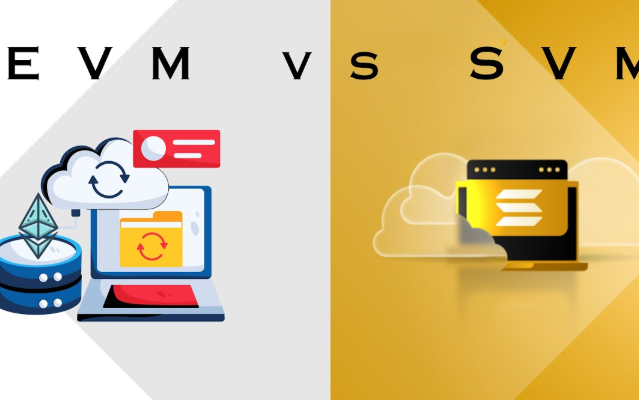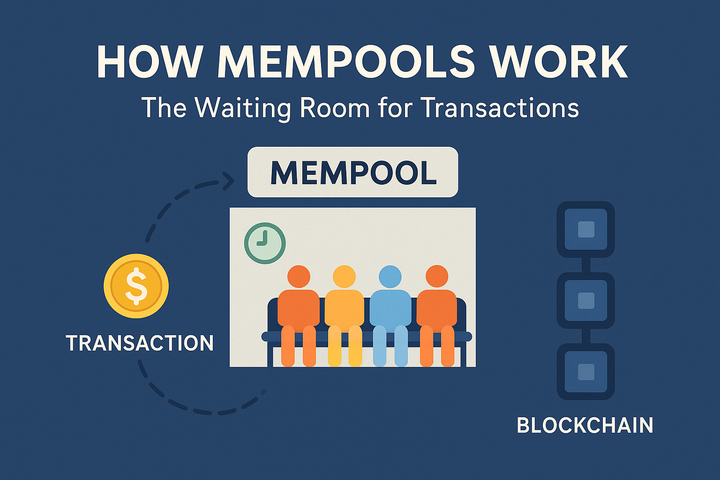EVM vs SVM: comparison, what are the prospects

A virtual machine is the foundation of any blockchain. It determines performance, security, developer capabilities, and ecosystem compatibility. Today, the Ethereum Virtual Machine (EVM) is the undisputed industry standard. But the Solana Virtual Machine (SVM) is rapidly gaining popularity due to its high performance and special architecture.
In this article, we will compare EVM and SVM, understand the key differences, and answer the main question: which one is ready for the future of Web3?

What is EVM and SVM?
EVM (Ethereum Virtual Machine) is a stack-based virtual machine that executes smart contract bytecode in Ethereum and compatible blockchains (Polygon, BNB Chain, Avalanche C-Chain, etc.). Programs are written in Solidity or Vyper.
SVM (Solana Virtual Machine) is a virtual machine that underlies Solana. Contracts in it are called programs and are written in Rust or C, executed with high parallelism and low latency.

EVM vs SVM — Technical Comparison
|
Feature |
EVM (Ethereum Virtual Machine) |
SVM (Solana Virtual Machine) |
|
Main
Language |
Solidity
/ Vyper |
Rust /
C / C++ |
|
Execution
Model |
Sequential
(single-threaded) |
Parallel
(multi-threaded via Sealevel) |
|
Block
Time |
~12
seconds |
~400
milliseconds |
|
Transactions
Per Second (TPS) |
~15–30
(L1) / higher on L2s |
10,000+ |
|
Storage
Model |
Simple
key-value |
Account-based
with parallelization support |
|
Developer
Onboarding |
Easy /
Mature Tooling |
Complex
/ Rust-heavy |
|
Compatibility |
High
(widely adopted) |
Limited
to Solana or SVM-based chains |
|
Security |
Battle-tested |
Still
maturing, under rapid development |
Technological features
🔹 EVM:
1. Simplicity: clear model, extensive documentation.
2. Limitations: single-threaded execution, strict gas limits, which complicates the development of complex applications.
3. Ecosystem: hundreds of L2 and sidechains, integration with most tools.
🔹 SVM:
• High speed: transactions are processed in parallel.
• Complexity: requires a deep understanding of Rust and system programming.
• Unique runtime: no compatibility with EVM, but Solana offers its own framework (Anchor) to simplify.

Developer Perspective — When to Choose EVM or SVM
|
Question or Requirement |
EVM |
SVM |
|
Preferred
Language Stack |
Solidity,
TypeScript |
Rust, C |
|
Need
for high throughput |
May
require L2 solutions |
Native
high TPS |
|
Launching
standard DeFi or NFT apps |
Easier
due to templates and libraries |
More
flexibility, but more complexity |
|
Custom
execution logic |
Limited
within EVM constraints |
Possible
with low-level Rust and parallelism |
|
Cross-chain
and ecosystem compatibility |
Broad
and established |
Growing
but more limited |
|
Learning
curve |
Lower |
Higher |
Why SVM is gaining popularity
High performance
Developers can build complex on-chain games, orders, AMM and other structures that are impossible on EVM without off-chain solutions.
Growing Solana Ecosystem
Solana has seen its share of technical hiccups, but since 2024, it has shown stability and increased activity.
Infrastructure and Standards
Frameworks like Anchor and Sealevel VM are making development more accessible.
SVM beyond Solana
Projects like Eclipse, Nitro, Solana L2 on Ethereum, and even rollup solutions are starting to adopt SVM beyond Solana.

Future Outlook — Short and Long Term
|
Virtual Machine |
Short-Term Outlook |
Long-Term Potential |
|
EVM |
Dominates
today via Ethereum and L2s |
Might
face scalability limitations without major changes |
|
SVM |
Rapid
ecosystem growth through Solana and L2 adoption |
Could
become a high-performance standard for Web3 |
EVM is not losing ground
Despite its limitations, EVM remains a leader due to:
• a huge developer base,
• mature infrastructure (Hardhat, Foundry, Remix, Chainlink),
• cross-chain availability.
Current initiatives like zkEVM, parallel EVM, Move-to-EVM are also pushing EVM into the next generation.

Conclusion
EVM is a stable, mature, and versatile choice, especially for simple or quickly-launched dApps. It will remain a central part of the Web3 ecosystem for a long time to come.
SVM is a bet on performance, scalability, and new scenarios. It can become a key component of the Web3 2.0 infrastructure.
This is why many teams are starting to develop EVM-compatible applications, but with an eye on moving to SVM or multi-VM architectures.



Comments ()